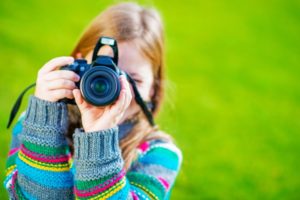 If you are interested in picture taking, are always looking for unique subjects and interesting angles for your photos, you may be interested in becoming an amateur photographer. Today, iPhones have made it easy to point and click, and they can produce some pretty nice looking pictures, but if you want to use those pictures for other things besides Facebook (photos, book covers, illustrations, etc.) you will need to take your pictures with a decent camera that can give you the right DPI (dots per inch) when reproducing them. So, today we are dedicating our blog to the beginning photographer.
If you are interested in picture taking, are always looking for unique subjects and interesting angles for your photos, you may be interested in becoming an amateur photographer. Today, iPhones have made it easy to point and click, and they can produce some pretty nice looking pictures, but if you want to use those pictures for other things besides Facebook (photos, book covers, illustrations, etc.) you will need to take your pictures with a decent camera that can give you the right DPI (dots per inch) when reproducing them. So, today we are dedicating our blog to the beginning photographer.
What You Will Need
The most basic equipment you will need, of course, is the camera and lens. When you begin on your adventure to become an amateur photographer, you will probably gravitate to certain subjects such as people, wildlife, landscapes, cityscapes, etc. At that point you will also be looking at more specialized equipment.
The Camera: DSLR cameras are what most people picture (pardon the pun) when it comes to any type of serious photography, from amateur to professional. There is a wide range of lenses available for DSLR cameras so you can choose one that specifically suits your needs.
Digital cameras record the light it receives in pixels on a ‘sensor’ which is sort of like a small piece of electric film. Only a certain number of pixels, depending on their size, will fit on the sensor, and more pixels do not always create better pictures. A DSLR camera with between 12 and 50 million pixels should produce a good quality image.
The Lens: The most important things you need to know about a lens are the focal length and the maximum aperture. The focal length is measured in millimeters. The higher the number the bigger the zoom, while the lower the number the wider the shot. The higher the number the closer the focus, which will give you a smaller, closer aspect of the larger view. Lower numbers (lower than 30-50 mm), provide a larger view than you would naturally see with the human eye.
While the camera sensor records the light it receives, the lens is what lets the light in. Maximum aperture can be relayed as f/2.8 or F2.8 or 1:2.8. These numbers refer to the maximum amount of light which the lens can let in. Lenses with larger maximum apertures (lower numbers) can gather more light than those with higher numbers. As an example, an F1.8 lens can use more light than an F4 lens and, therefore, can be used in lower-light situations without a flash.
ABOUT YOUR DALLAS, TX, PROFESSIONAL PHOTOGRAPHER:
Doug Davis has been producing professional, engaging videos and product, food, and lifestyle photography from his Dallas, TX, studio for more than 20 years. D-Squared Studios is located at 4312 Elm Street, Dallas, Texas, 75226. Contact our office at (214) 746-6336 or email Doug at doug.davis@d2studios.net.
